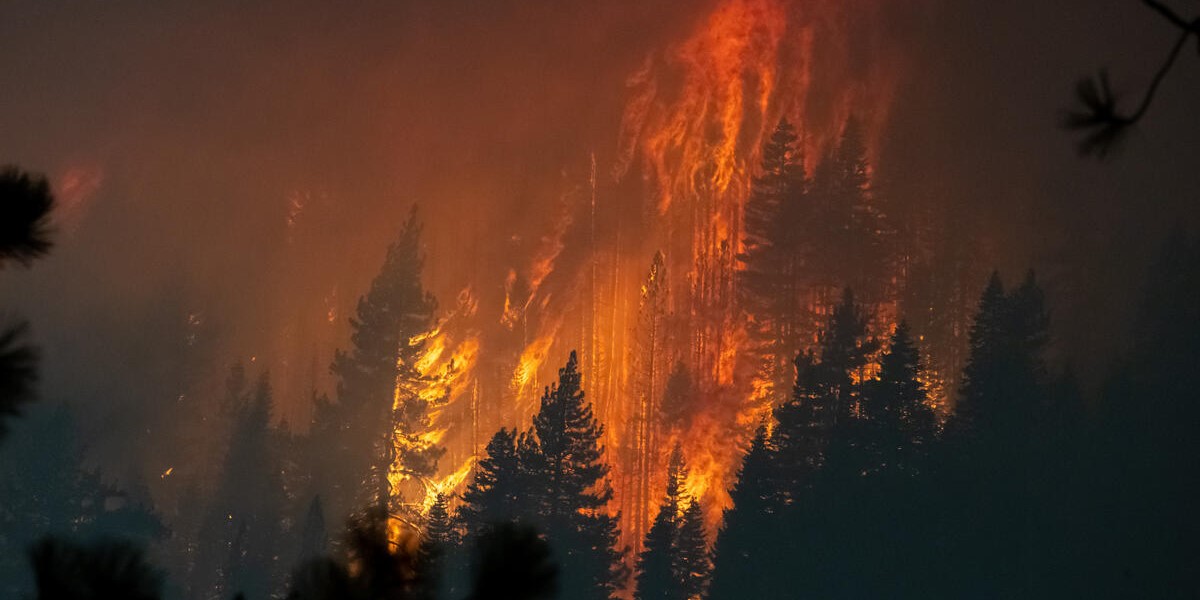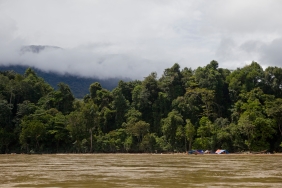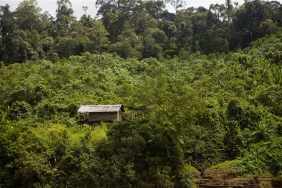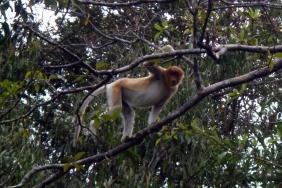HAZE AND NEGLECTED PEATLANDS
By: Afdhal Mahyuddin
The haze that has plagued residents on the island of Sumatra peaked in mid-March, when thousands of hotspots were detected in just one day, and more and more school students were closed. Not to mention, the airport in Pekanbaru was paralyzed for days, followed by neighboring provinces in West Sumatra, North Sumatra and Jambi being exposed to smoke from Riau. Air quality is deteriorating in Riau, averaging above 300 PSI, so dangerous that Riau is not even livable anymore, said a lung specialist.
President SBY has just given an ultimatum to the Riau Provincial Government to overcome this haze emergency due to forest and land fires, and is ready to take over if the region is unable. Civil society groups and citizens are putting pressure through social media on the Palace to do something to protect millions of people in Sumatra who are losing their right to breathe fresh air.
Well, there's haze, there's fire. There is fire, there is arson or fire. In the records of the coalition of activists monitoring deforestation in Riau, Eyes on the Forest, there were 6937 hotspots detected from the NASA Modis Fires satellite, just in February 2014. The accumulation continued to grow in March.
Examining the origin of this environmental crime inevitably requires us to understand the complexity of forestry and plantations in Riau and Sumatra in general. Understanding the haze emergency is not enough to see how the BNPB (National Disaster Management Agency) troops are assisted by the anti Karhutla task force from across institutions including the military in extinguishing the fire. With the deployment of Russian helicopters for water bombing, artificial rain efforts, and direct extinguishing by trained personnel. It can be said that they almost did the maximum work if you look at the strength of the government's usual efforts, compared to the massive amount of burned peatlands, and the elixir of rain that never came. Finally, we have to introspect again, what have we done to the tropical forest ecosystem, to the peat swamp forest, and the environment at large?
Talking about true peat is like romanticism because peat forests should not be cleared, especially with hundreds of thousands of hectares of permits to convert them, both for pulpwood plantations, oil palm plantations, and the timber industry as happened in Riau. Peatland is a type of wet soil that is the hardest to extinguish when fires break out.
Peat ecosystems cleared for conversion dry out and release carbon. When the fires come, with dry weather, especially with the lack of rain, extinguishing the fires and smoke becomes almost impossible, unless you wait for the rain to fall.
A list of complexities in the forestry and plantation sectors cannot be ignored when talking about the problem of forest and land fires with the impact of widespread haze. The remaining natural forests in Riau are predicted to be around 2 million hectares, which may be far below that figure. Many of the remaining natural forests are in protected and conservation areas, and even then, they have been undermined by encroachment under the guise of communities but capitalized by financiers. Meanwhile, the Riau Provincial Spatial Plan (RTRWP) has been in dispute for years, so it has yet to be finalized. As a result, land conflicts and overlapping concessions have become a common story in Riau province.
The remaining natural forests fell to their lowest point, when the two pulp and paper giants (APP and APRIL) tried to repent because there was not much forest for them to clear anymore. However, the problem in the HTI world is that many of their concession areas are not well guarded, so illegal activities are rampant, which is precisely the entrance to encroachment in the National Park (TessoNilo) and Biosphere Reserve (Giam Siak Kecil). This means that licenses are too large but the ability to maintain concessions is minimal, resulting in a record of hotspots every year in a number of HTI concessions.
The lesson to be learned, is there still much natural forest that must be protected left in each concession? Can the paper industry accept the fact that one day their land licenses will be reduced or revoked because they are proven to be a hotspot for fires every year? The Ministry's regulation limiting land ownership to 50,000 hectares per group in each province should be corrected as currently one group can control 1 million hectares of concession land, just in one province! The Ministry of Forestry must be firm in addressing the many concessions that contribute to haze every year.
For oil palm plantations, can the Ministry of Agriculture's firmness not to develop oil palm on peatlands be consistently implemented in the field? What about the prohibition of burning for land clearing? Can punishment be given to companies that violate it? Palm oil industry associations must honestly admit that there are still many land burning activities occurring in concessions if we look at the names of subscription detected hotspots. ISPO and RSPO must strictly implement the rules of the game if they do not want to be blamed for supplying smoke to millions of innocent people.
From the analysis of hotspots by NASA satellites, carbon-rich peat areas, whether they are natural forests, oil palm plantations, industrial timber concessions (acacia plantations), community lands that usually tend to palm oil, dominate the current hotspots.
This means that peatland clearing contributes greatly to the crime of haze and mass murder of children, the elderly, and citizens in Sumatra in general. This is a big job for all relevant agencies, how to reduce the exploitation of forests and peatlands, and design to restore them.
There have been many claims by large industries, especially the forestry and plantation sectors, that managing peat through water table management or so-called ecohydro has failed to prevent the effects of haze. In fact, there are HTI companies that siphon Kampar River water to wet their canals and dry peat.
What is happening in Riau and Sumatra today is generally exacerbated by the direction of the wind towards the island of Andalas, in contrast to last year's dry season, when the wind headed north, until Singapore and Malaysia became excited.
Reactions from neighboring countries and international coverage of the fire and haze phenomenon are not as noisy as in June-July last year. However, the impact of the haze on Sumatra has been devastating, similar to what happened in 2007.
Finally, solutions to prevent the recurrence of haze negligence must be prioritized together, without any party feeling the most authoritative and egosectoral. Because we are a group of human nations who do not want donkey-style stupidity to occur repeatedly without a solution. And treating nature wisely is a necessity if we don't want more destruction to happen around us.
***
*Conservation activist, member of Eyes on the Forest NGO coalition, lives in Pekanbaru




